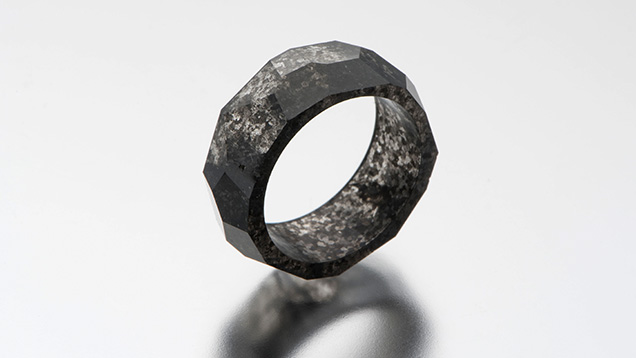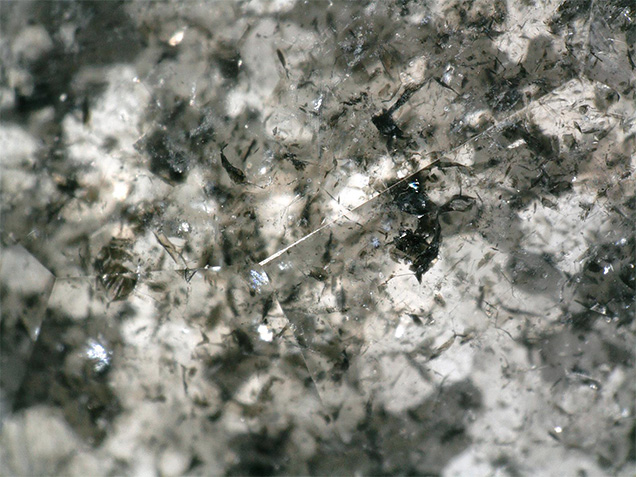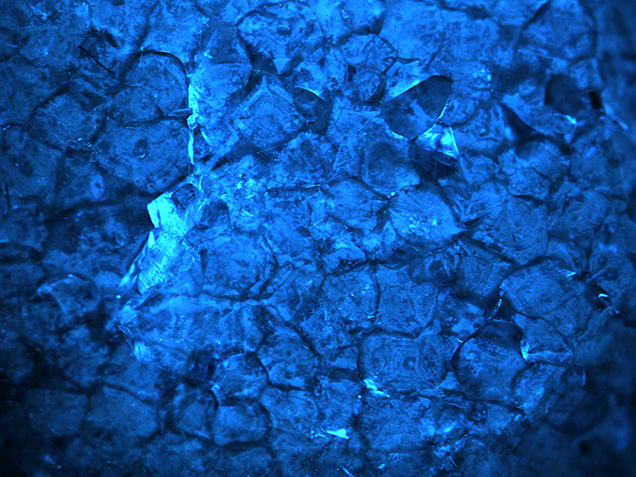Solid Carved Dark Gray Diamond Ring

A ring made entirely of natural diamond (figure 1) was recently submitted to GIA’s New York laboratory. A large rough weighing approximately 196 ct was used to create this unusual 13.15 ct carved piece. It is common to find solid carved rings of jade and wood, which were traditionally worn as symbols of status or wedding rings signifying eternity. This is the first example of a solid diamond ring submitted to GIA for identification.

This solid type IaB diamond ring owes its Fancy Dark gray color to the graphite needles (figure 2) trapped during formation deep below the earth’s surface. Like famous gem-quality black diamonds such as the Black Orlov, the Korloff Noir, the Black Star of Africa, and the Spirit of de Grisogono, this diamond has clear spaces creating viewing windows that capture a snapshot of the ring’s formation history. The ring was fashioned from the Beaufort diamond from Canada’s Northwest territories and named the “Beaufort Ring.”

This diamond rough from which the ring was carved likely formed billions of years ago under high pressure. During regional metamorphism, H3 and NiN complexes were formed within the crystal lattice (K. Smit et al., “Black diamonds from Marange (Zimbabwe): A result of natural irradiation and graphite inclusions,” Summer 2018 G&G, pp. 132–148). These impurities were detected by photoluminescence spectroscopy. Infrared spectroscopy was used to detect the B aggregates and hydrogen complexes within the diamond lattice, categorizing this diamond as type IaB. Fluorescence imaging of the ring using the DiamondView showed bundled dislocation networks indicative of natural diamond growth (figure 3). While this diamond ring may not be a traditional piece, it carries many unique aspects capturing a snapshot of Earth’s history within a true infinity band.



